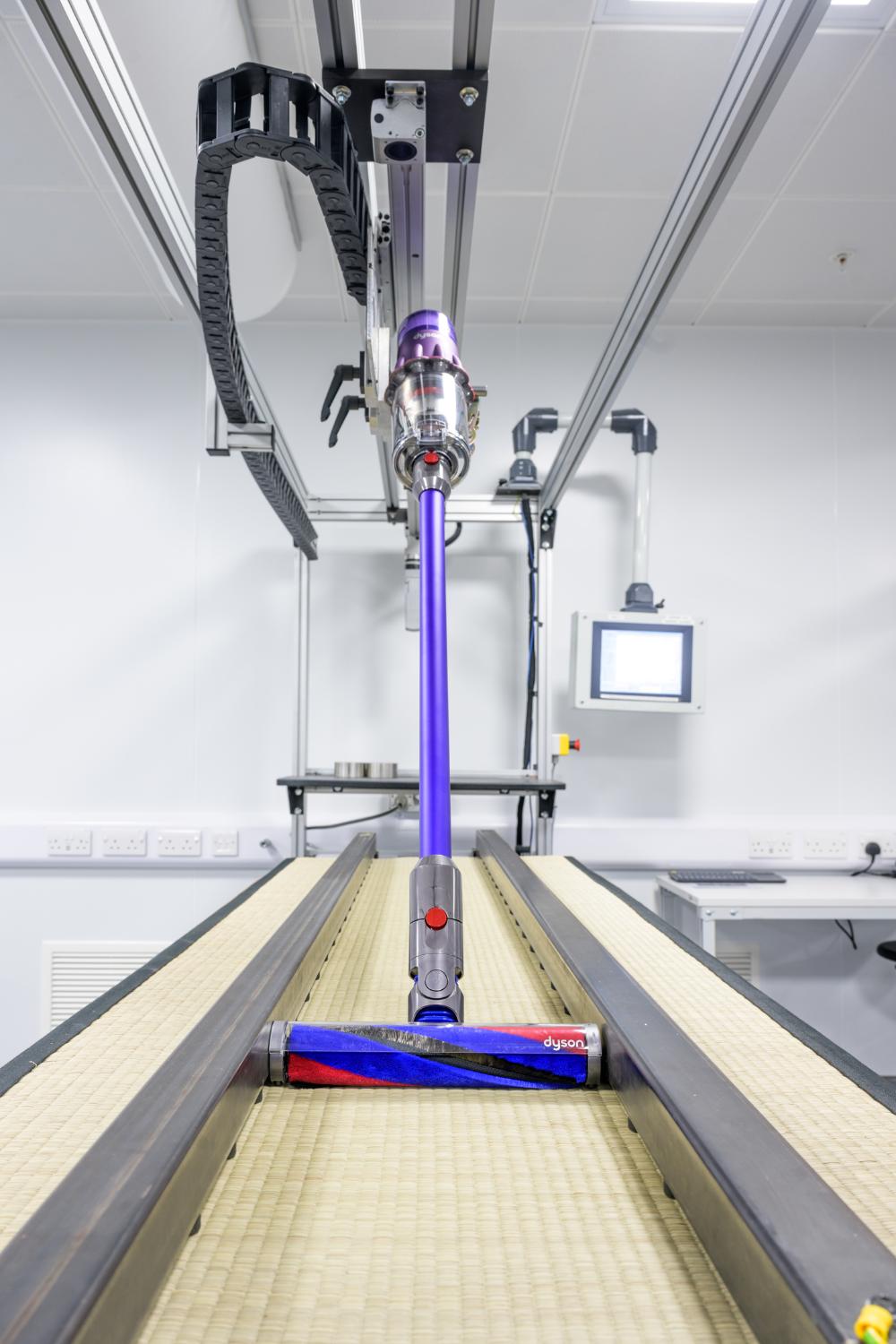How to clean your mattress
We spend roughly a third of our lives in our beds, but studies show that hardly any of us regularly prioritise our mattresses as part of our cleaning regimens. Dyson engineers share top tips on how to keep your mattress clean – and tackle the microscopic life lurking beneath the sheets.
14 October 2020
-
Studies show that many people focus on cleaning their bedrooms than any other room in the house. For example, the American Cleaning Institute’s 2020 study found that 25% of those surveyed stated that their bedrooms were where they focused most of their deep cleaning attention. While 19% of respondents admitted their bed linens were some of the dirtiest items in their homes, mattresses didn’t even make the list of areas that people considered cleaning¹.
While it may look clean, your mattress may actually be a hot bed of microscopic life, which could be impacting your wellbeing while you sleep. Dust mites, their faeces, bacteria, viruses, pollen and other allergens make up the complex matrix that is household dust, which also exists in your mattress.
-
-
Indeed, there can be millions of dust mites in a single mattress² and the problem is a global one. One study found detectable dust mite allergen in the beds of about 84% of American homes³ surveyed, while another found detectable allergen in 68% of⁴ European homes⁵. A study in Singapore found dust mites present in 94% of all mattresses analysed.
And while dust mite themselves are harmless, dust mite allergens are actually the most relevant inducers of allergic diseases worldwide⁶. Extensive exposure in early childhood to indoor allergens, including house dust mites has also been associated with asthma⁷.
“Wherever you spend the most time and shed the most skin, that’s where you’re most likely to find dust mites,” says Gem McLuckie, Lead Research Scientist in Microbiology at Dyson, “and we spend 1/3 of our lives in our beds. In fact, most of us are probably sleeping in a bed full of dust mite faeces – particularly in dust mite season.House dust mites are microscopic arachnids that can be found in homes all around the world. Their average lifecycle is 65-100 days and during that time they will produce approximately 2,000 faecal pellets and secrete even more proteins through their saliva – both of which can trigger allergies and impact your wellbeing⁸.
Dust mites feed primarily on dander or dead skin cells shed by humans as well as animals. On average, humans shed 2g of skin per day⁹, and even more at night where friction from bedding causes dead cells to shed. They can also get the nutrients they need from other household debris, like food crumbs¹⁰. So, if you relax with breakfast in bed in the mornings, or cosy up with a pet at night, you might need to clean your mattress even more regularly.
-
Microbiologist quick mattress cleaning tips
“The frequency with which you clean your mattress depends on the mattress itself, the user and how susceptible the user is to dust mite allergens,” says Gem. “I’d recommend cleaning them every six months: once when you’re Spring Cleaning and once at the end of dust mite season in October . That way you can reduce the number of skin flakes present in your mattress before dust mite season begins and remove any excess allergenic material once they’ve finished breeding; supporting your wellbeing through the winter months.”
Follow Gem’s four easy steps below to cleaning your mattress:
- Remove and wash bedding. Washing sheets and blankets on a 140°F or 195°F wash will help to break down and reduce allergens. While you may vacuum your mattress only a few times a year, its recommended that you launder and change your bedding once a week to remove microscopic skin flakes and keep dust and allergens at bay.
- Vacuum gently – but with power. Dust mites might be small, but they’re tenacious. Their claws help them cling on to the fibres deep in your mattress, which can make them difficult to remove. Using a vacuum with a high-power or Boost mode will deliver the suction you need to remove as many mites, skin flakes and allergens as possible. Use a Mini-Motorised tool in handheld mode which won’t damage the surface of your mattress but has stiff nylon bristles that can agitate the fibres in your mattress and loosen dust mites and other debris. Make sure that the vacuum you’re using has a fully sealed filtration system to avoid allergens being expelled back into your face as you clean!
- Focus on hard-to-reach areas. Once you’ve deep cleaned the surface of your mattress, pay attention to any crevices or folds where dust and allergens can gather. For cleaning around the edge of your mattress where there may be a seam, use a Crevice tool in handheld mode to remove any hidden dust. Don’t forget under your bed as well, as dust mites thrive in dark, warm and humid areas with plenty of skin flakes that often remain undisturbed.
- Flip, repeat, remake. Flip your mattress over and vacuum the other side too to keep concentrations of invisible allergens low. If you’ve cleaned any stains (find out more below), ensure that these have dried out fully before remaking the bed – humidity will encourage mould, bacteria and potentially dust mite proliferation in your mattress. You may want to consider using a mattress protector which will absorb excess sweat and dust flakes and can be more easily washed.
How to tackle stains
Occasionally, mattresses demand more than a surface clean. While it can be tempting to ignore stains on a mattress, or resign yourself to defeat, there are a few things you can try to keep your mattress looking fresh, even after years of use.
“Like with any stain, reading the label of the product you’re using to remove it is essential,” says Dr Calum Robertson, Chemical Research Scientist at Dyson. “Stains can be made up of a number of complex chemical components but understanding the type of stain you’re trying to remove can help point to the right treatment, without being too abrasive or harsh on your mattress.”
- Enzymatic stains. These include substances like blood, sweat and urine and are stains that are made up of proteins. Enzymes work by breaking down large molecules into smaller, more soluble ones. Use warm water and biological laundry detergent as soon as possible to gently blot the stain until it has dissolved.
- Oxidisable stains. Stains caused by tea, coffee, or red wine often fall into the oxidisable stain category. Using oxidising agents, commonly found in bleach-based products, is a good way of removing these kinds of stains, as they will break down the coloured substances into colourless ones. Use bleach-based products sparingly and patiently, as they can cause irreversible discoloration to both the stain and the dyes in your mattress.





